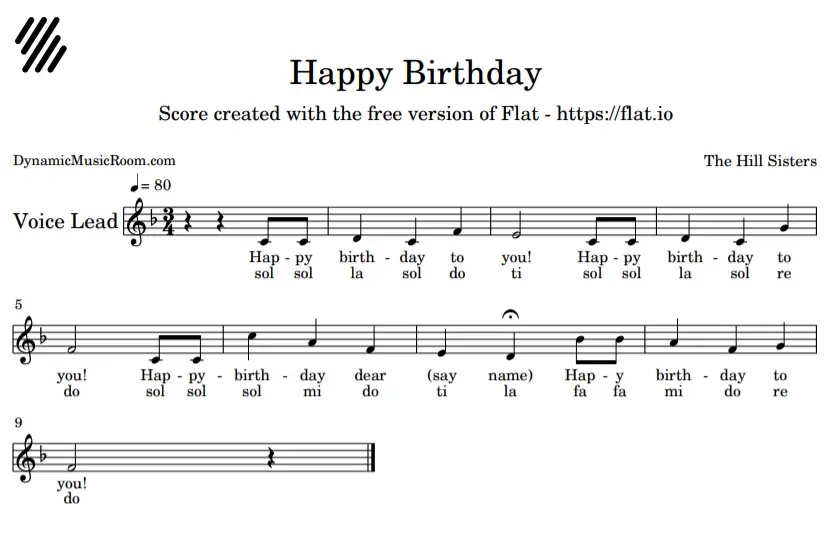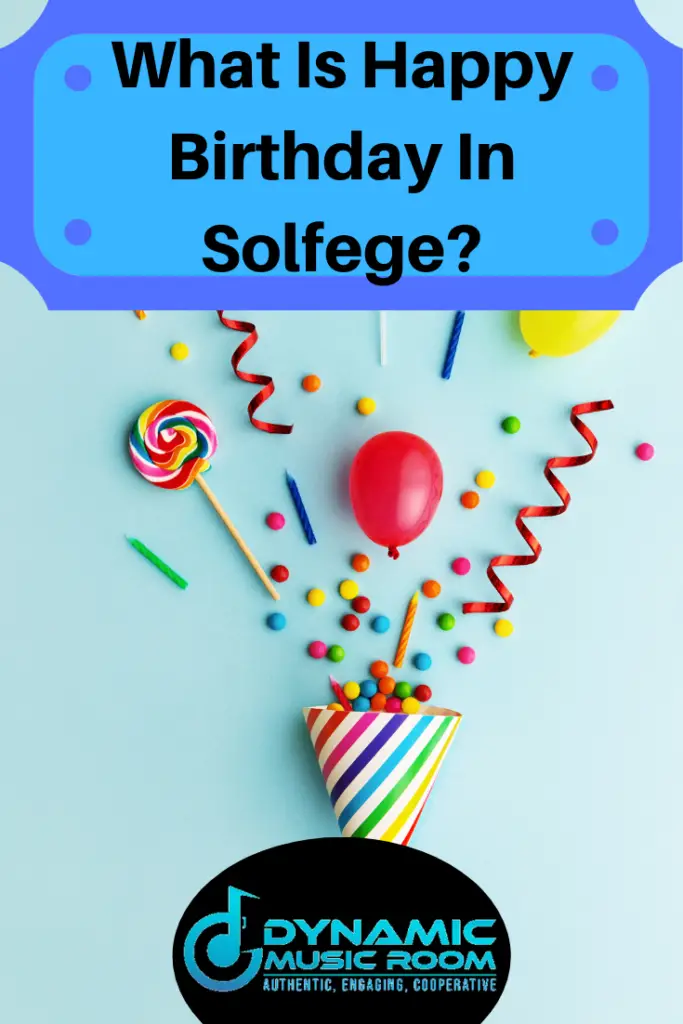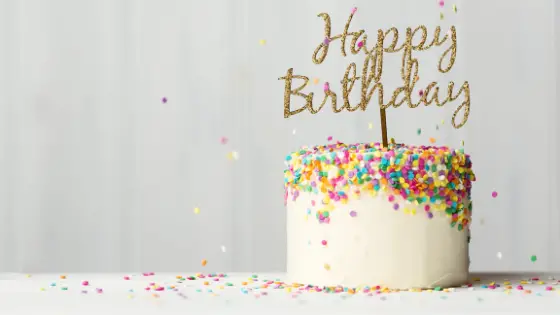Whenever it’s a student’s birthday, I ask them how they want me to perform the song for them. Usually, they pick recorder, piano, guitar, or ukulele, but one student asked for me to sing it in solfege.
So I had to think: what is happy birthday in solfege?
Happy birthday in solfege isn’t tricky to figure out once you realize the song starts on low sol. The song uses these solfege pitches:
- Low sol
- Low la
- Low ti
- Do
- Re
- Mi
- Fa
- Sol
Read on for the notation and solfege pitches.

Save time with these 60 FREE Music Resources to use in your room right away!
Stop searching the whole internet to find good activities. I’ll help you cut to the chase with my favorite 60 FREE resources.
Table of Contents
Happy Birthday Music Notes: Do Re Mi
This song is best performed in the key of F major. In this key, you keep the song naturally within C-C for the octave leap coming in the middle of the tune.
Check out this image which can help you learn Happy Birthday in do re mi format.

You may also want to check out my video directions on how to sing Happy Birthday in solfege.
Where Did Happy Birthday Come From?
Happy birthday was created in 1893 by Kindergarten teachers, Patty and Mildred Hill, in Kentucky. Some speculate whether she combined elements of folk songs she may have known at the time or if it’s completely original.
Regardless, this song has remained a staple in the English speaking world to be sung on birthdays all over.
The song started as a greeting song the sisters would use in their classrooms. The song’s original title was “Good Morning To You.”
Check out the Conversational Solfege Explained DVD for an immersive workshop on how to teach and sing better with solfege.
Click the link to see it on Amazon (Affiliate and all; small commission for us, no extra cost for you. Win-win).
Happy Birthday Copyright Controversy
At some point, the Hill sisters who created the song sold the copyright for the tune. At last check, it was owned by Warner/Chappell Music.
For the longest time, no other media venue could use one of the world’s most popular songs without paying a royalty. Royalty payments were rumored to be in the $2 million per year range.
Many suspected the song was owned by Michael Jackson or Paul McCartney, but this wasn’t the case. In fact, the Beatles wrote their Happy Birthday song in hopes that it would catch on instead of the original.
It wasn’t until 2016 that trial declared the song public domain and removed it from the Warner copyright who claimed to own the rights until 2030.
Read more about the Happy Birthday Lawsuit.

Why Can’t Restaurants Sing Happy Birthday?
The easy answer is: they can.
As mentioned in the last section, the song was held under copyright by Warner/Chapell until 2016, so restaurants and businesses couldn’t officially use this without risking potential lawsuit by the music conglomerate.
In order to still offer birthday specials, restaurants would use other versions of the songs (often chants) to replace the classic tune.
Now that the lawsuit put Happy Birthday in the public domain, restaurants can use it, but their tradition at this point is to use something else.
Conclusion
I hope you found this information about Happy Birthday in solfege helpful. Learning popular songs in solfege is a great way to engage and motivate your students to improve their aural skills.

